Native American women are the heart and soul of the almost eight-month-old protest against the Dakota Access Pipeline. The Standing Rock movement was birthed on April 1st by a small group of women from the Standing Rock Sioux Tribe.
They set up a tent on the proposed pipeline route to protest its construction on sacred Native American burial grounds and to protest the high probability that the pipeline would produce unsafe drinking water for the large Native American community it would impact.
Initially the camp took the form of a prayer circle where the women founders prayed for their land not to be invaded by the pipeline, which they dubbed “the black snake.” The women called themselves “water protectors,” which caught on as the movement’s slogan.
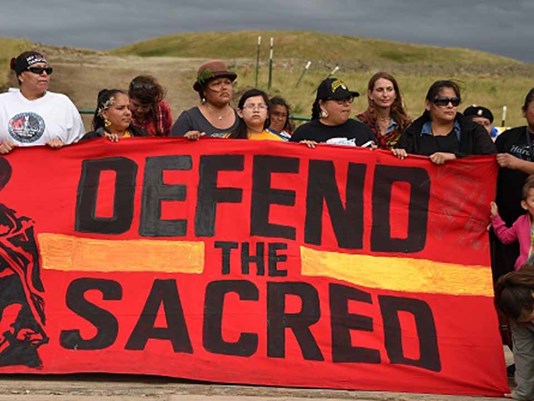
Native American Women leading the charge at Standing Rock
Standing Rock captured the imagination of environmentalists and peace activists who made their way to North Dakota in droves. By the summer Standing Rock had mushroomed from a single tent to thousands of tents within a self-contained community that includes a cooking area, a medical area, a place where warm clothing has been donated and even a birthing tent, which has ushered in several babies.
Native American women continue to provide the backbone for the Standing Rock protest. They’ve emerged from a culture that equates Mother Earth with women, where both are respected equally.
To quote LaDonna Brave Bull Allard, a Standing Rock founder, “The water is female; water is life and so we as women must stand with the water . . . We stand in prayer and in civil disobedience. We stand because we must protect our children and grandchildren.”
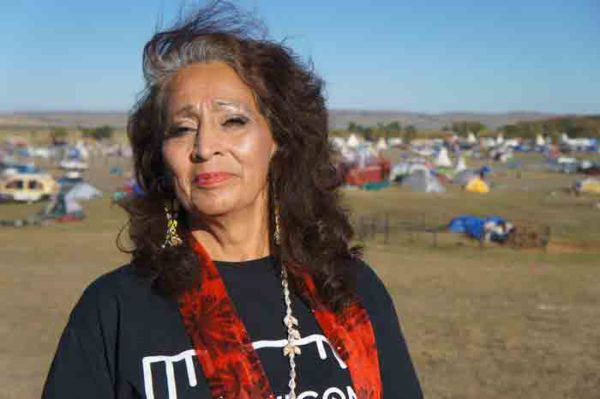
LaDonna Brave Bull Allard, a founder of Standing Rock
Referring to the Native American tradition, Tracy Rector, a Seminole, says, “The way we treat the earth is inseparable from the way our society treats women.
I find the unquestioning acceptance of Native American women as the sacred leaders of their communities where nature is revered in startling contrast to the dominant American paradigm where nature is a commodity for exploitation! Women by extension become less valued in this model.
Native American women have suffered injustices from the dominant culture in the form of the pipeline workers’ “man camps”,” which sprout up when pipeline construction occurs. Prairie McLaughlin describes how the camps have created a climate for the sexual abuse and rape of indigenous women. Women who have been victimized cite police indifference when they’ve tried to get help.
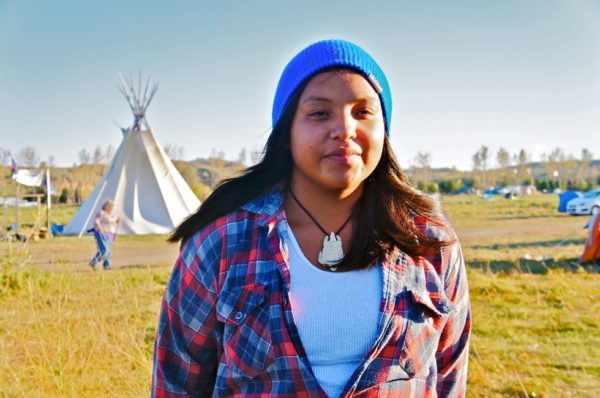
Jaslyn Charger, a young Standing Rock activist
Jaslyn Charger, founder of the Indigenous Youth Council for Standing Rock, calls the Dakota pipeline “environmental racism,” referring to the fact that the original path for the pipeline was to cross through Bismarck, but it was rerouted out of concern that it could contaminate the water of Bismarck’s white population.
The women of Standing Rock advocate alternative energy forms in lieu of the dangerous pipeline. Phyllis Young, a former councilwoman for the Standing Rock Sioux, refers to “the sun as our brother” in championing solar energy.
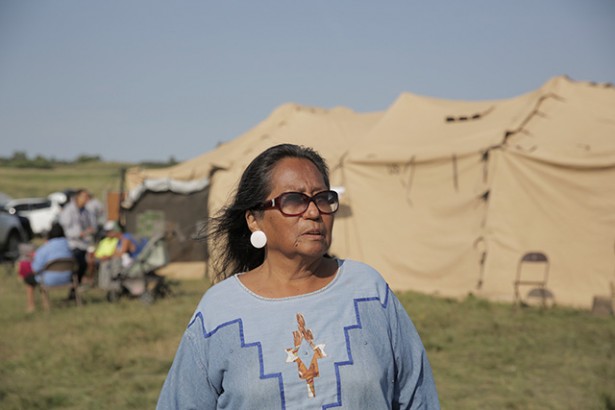
Phyllis Young, a prominent Native American elder and member of Standing Rock
Standing Rock has become a national symbol for environmental rights while producing a record unity in the Native American community. The 300 tribes represented in the camps is the largest number of tribes ever assembled in one place.
The support for Standing Rock isn’t confined to the thousands of volunteers flocking to the camp but also by solidarity protests in communities across the country. Over a thousand veterans are on their way to Standing Rock as I write.
Government and corporate resistance to Standing Rock has been met by aggressive police actions against the peaceful protesters, sparking national outrage with sympathetic editorials in the main stream press. (Despite appeals to President Obama to intervene on behalf of the protestors, the White House remains silent.)
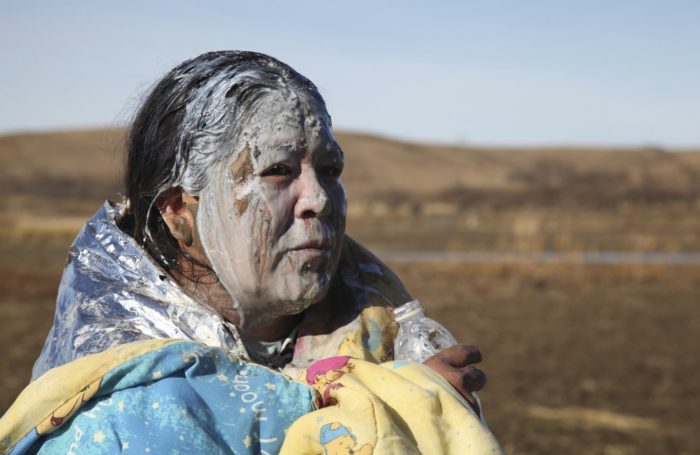
A Native American female elder after a police assault
Riot-clothed police have liberally used tear gas, pepper spray, rubber bullets, high velocity water hoses in freezing temps, causing hypothermia, and combustion grenades, producing a severe arm injury to one young protester who is at risk of losing her arm. To add to their injustices the police have arrested journalists, in defiance of the Constitutional provision insuring freedom of the press.
The Army Corps of Engineers has put Standing Rock on notice to evacuate by December 5th or be arrested for trespassing. The camps have responded by affirming their resolve to stay and continue their peaceful protest.
As one protestor said, “This has become bigger than a pipeline fight. This is a fight to take back America.”